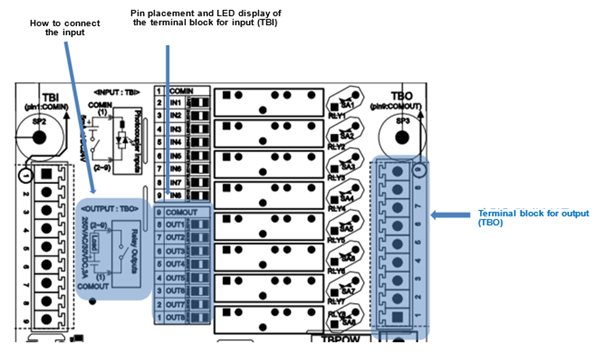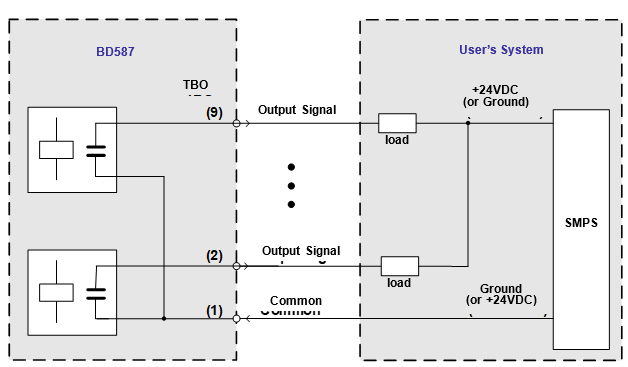5.13.2.2. Digital Output
5.13.2.2. Digital Output
The following figure and table describe the pin configuration of the digital TBO. Each terminal block makes it possible to connect eight different output signals to the same common power.

Figure 5.85 Pin Configuration of the Digital Output Terminal Block of the Public 8-Point IO Board (BD587)
Table 5‑45 Pin Configuration of the Digital TBO of the Public 8-Point IO Board (BD587)
Pin No. | Signal Name | Signal Description |
9 | COMOUT | COMMON power (Ground DC24V or DC24V) |
8 | DO1 | 1st output of the 1st public output signal port * of the user |
7 | DO2 | 2nd output of the 1st public output signal port * of the user |
6 | DO3 | 3rd output of the 1st public output signal port * of the user |
5 | DO4 | 4th output of the 1st public output signal port * of the user |
4 | DO5 | 5th output of the 1st public output signal port * of the user |
3 | DO6 | 6th output of the 1st public output signal port * of the user |
2 | DO7 | 7th output of the 1st public output signal port * of the user |
1 | DO8 | 8th output of the 1st public output signal port * of the user |
Note *) The 8-point output port of the BD587 board is fixed as the port #1.
The electrical specification of each output signal is as follows
n Output terminal component: Relay (AC220V, 5 A)
n Rated output signal: DC24V and AC250V / 1 A for each point
n Common power: 24VDC or 24VDC Ground / Max. 3 A
The user is required to connect the output signal, as shown in the following figure. First, connect the common signal to the expansion public IO board (BD583). Then, connect each signal to the output pin according to the purpose. For power, eight output signals can be configured as a unit and used differently for each port.

Figure 5.86 Method for the Connection of the Output Signal of the Public 8-Point IO Board (BD587)